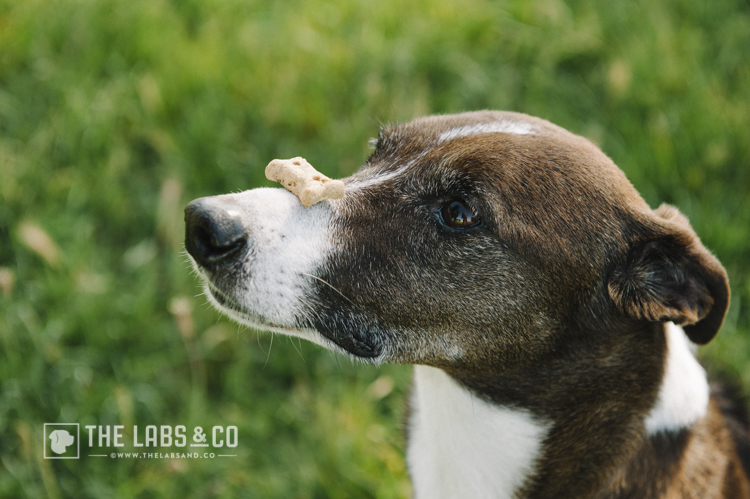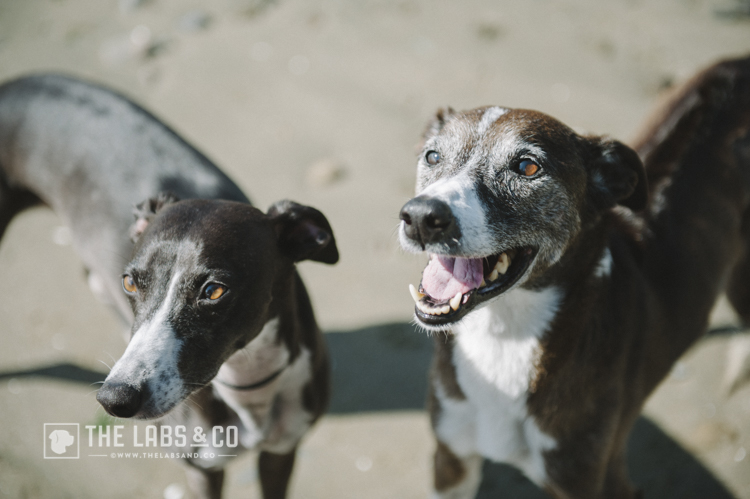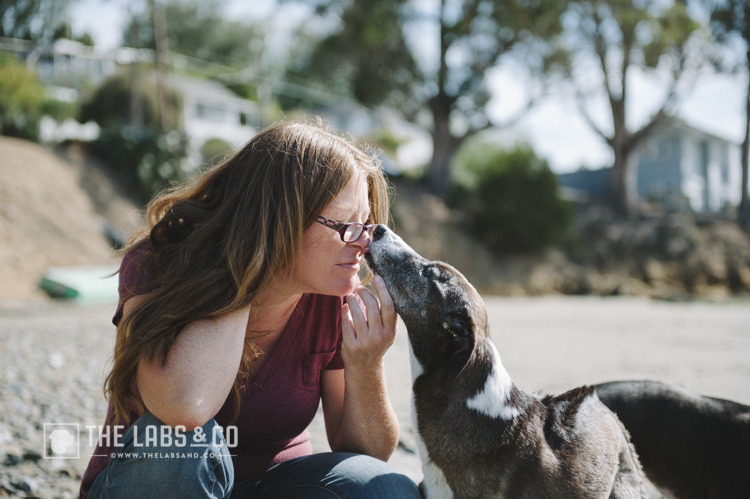I’ve come a long way as a trainer. It’s been quite an evolution.
I’d like to think we all do that, though I’m aware that there have to be trainers that train today just as they did when they started. With all the changes in dog training over just the last two or three decades, it’s almost hard to imagine.
Like many, I started on the traditional route, using leashes and collars as instructional tools and believing praise was adequate motivation for the complex and often difficult tasks and skills we require of dogs. But there was a revolution in dog training, and in the late 90’s, I started learning about clicker training, thinking more scientifically about behavior problems and less anthropomorphically (no more pack theory!), and using food liberally to both explain what I wanted and to motivate dogs to want to do those things.

I adopted a dog with severe anxiety around that time and through working with her, and working with all the many trainers I sought out to help me better my skills, I eventually specialized in fearful, reactive, and stressed out dogs.
Food became my tool of choice, and “threshold” was now something I understood as a big part of a program’s success. You need to keep a dog under threshold in order to do your rehab work, and you need to help the dog equate the thing he fears with the thing you are now providing: the food. The tighter the association, the more the dog will come to see that the thing he fears is really just a predictor of food, and thus isn’t so bad after all.
I learned to be liberal with food, and to time its production after the appearance of the trigger, so that dogs learned that triggers predict food. All well and good.
Except for when it wasn’t.
Working with a Fearful Dog
Fear is tough to work with, and threshold is hard to honor in changing conditions. It’s also very hard to measure! What counts as under threshold? That the dog will eat? That was what I was taught initially. If he can eat, you can make the association, and you can get emotional — and thus behavioral — change.
But is that a good enough definition? It was workable, but to me at the time, it was lacking. Too many dogs can eat while tense and worried.
Fear is tough to work with. It spreads easily from trigger to trigger, and can be very resistant to change. An animal who feels fear (or any of its analogs, for the sake of discussion), is so often physically tense, cognitively busy, and emotionally pressured. It makes learning very difficult, and is of course the very reason we monitor threshold.

But still, learning the lessons that the food is trying to bring while struggling to concentrate, physically loosen up, and be in a positive emotional space is challenging. If you’ve been training for any time at all you’ll know that lots of dogs can eat and attend to you pretty well, and yet still be tense and concerned about a trigger in their environment, even one very far away. It can make threshold hard to honor, and definitions fuzzy.
I wanted something more.
I wanted something that could better help me read a dog’s internal state and get better odds on my guess of what they’re thinking and feeling. I wanted something that couldn’t be used at all if the dog wasn’t in a good emotional place for therapy, because they wouldn’t partake of it with you. No more gray areas! I wanted something that physically relaxes dogs, to help them let go of the tension that can keep fear alive. I wanted something that brought emotions alive in them that were incompatible with fear.
I was unconvinced that eating and feeling fearful were adequately incompatible.
Fighting Fear with Play: The Play Way
Enter social play. I will have a lot to say about play as time goes on, but for now I’ll just make the distinction for you that social play is not what we’re doing when we play fetch and tug with our dogs. That may be a form of play (though I’m going to argue later that it’s not — it’s just a really enjoyable activity), but it’s not sufficiently different from food for a dog for this specific rehabilitative purpose.
While active toy play may reduce physical tension, it may also just redirect it for a duration… only to have that tension return once the game is stopped. It also doesn’t reliably disappear when stress comes into the picture! Too many dogs can chase balls and tug with abandon and still be very concerned about a trigger in their environment—which can make it difficult to tell how they’re feeling.
Social play is what you’re doing when you’re goofing around together, being affectionate and silly.

Social play is when you’re laughing together, lolling, teasing and just enjoying interacting with each other, no toy or food or “reward” needed. Social play is the expression of the enjoyment of your social relationship.
Social play is what most of us just naturally do with puppies, well before we think of pulling out a cookie and rewarding them. Social play is personal connection, delight in each other, and laughter.
And here’s the thing about play that hits that social note: it disappears when stress creeps in, even a little bit. Laughing and silliness are the first things to go when you start to have a concern, and thus they make a great indicator that something has changed.
Social play is also very relaxing, as by design it involves loose bodies and goofy play moves. Tension makes it go away, or at least shift. Social play is also a really enjoyable activity, bringing up many positive emotions, ones that are incompatible with stress and fear.
If you have play, truly social, silly, loose play, then you stand a great chance of being able to say that fear is far away.
The Magic of Play
I’m not in any way saying that food and tug and fetch don’t have their place in rehabilitation and I still use them routinely, especially when the dog needs a lot of support in order to be successful, or when conditions change and play disappears, and I can’t effectively leave the situation. But I’ve been using social play now for about 4 years in my new rehabilitation program for dogs — called The Play Way — and the changes I see are remarkable.
Play really is magic, and I feel I’m only just beginning to identify all the ways it has been helping my students.
Of course, not all dogs, especially ones that are stressed and have some fears to contend with, really know how to get into that social play space with us. And not all people (ahem, most?) really know how to teach it to a novice dog, or even really do it at all with experienced dogs! It’s not something we’re encouraged to do with dogs, favoring toys instead when we “play,” and we can often be put off it by the style they bring to the table at first (mouthiness, anyone?).
All of these things are surmountable.
Some dogs find more of a play spirit than others do, and some people are themselves pretty serious and unused to relating socially to animals (and people!) this way, but it’s definitely possible to learn how. And once you have this social play relationship established, there’s so much you can do with it to help a dog learn to reframe their fears and let go of their stresses.
Want to learn more?
I teach people these skills in my online class “Dealing with the Bogeyman,” and once they have a useable play style that is workable for their team, they learn how to apply it carefully, in setups, to help their dogs reduce their fears and stress.
If you’re at all curious about adding a new tool to your toolbox, come join us in class starting April 1st — registration is open now!


The Play Way was a valuable tool I learned while taking classes with Amy. My dog is a serious GSD and it took time and patience to help Lexi and I establish that perfect social play niche. If you searching for a way to help your dog then I highly recommend checking out Amy’s course “Dealing with the Bogeyman”
Jennie Murphy
Certified Behavior Adjustment Trainer
Thanks, Jennie! It was always so great to work through Lexi’s challenges with you. She’s definitely a serious dog, and helping her lighten up and connect to her silly side is something I’ll always remember.
I am so excited to be taking the Bogey Man course. I hope that through taking this course, my reactive, sniffing dog whose brain freezes and she forgets what sit means, will be able to go on to a successful show career. As your course describes, she is brilliant, but when fear strikes, suddenly she can’t think! I have a background in natural horsemanship so I am fascinated by having the opportunity to study a psychology based dog training class for helping with this issue. I will be sharing this blog with all of my friends.
Can’t wait to get started and meet your dog, Emily!
Play way has revolutionized how I train. I am still learning how to play with my dogs as it has not come naturally to me. I practice and I listen to my dogs and we have come so far with the Boogeyman class. Thank you Amy.
Hi, Liz! Happy to hear from you! I know, play isn’t always the easiest, but our dogs come to understand our funny ways, and meet us more than half way after a while, haha. The listening and the conversation is really the best part, anyway!
Love! Bogeyman was the best course I’ve ever taken. It made such a difference to Rayven’s teeter from she hated to see it move to the most amazing teeter performances and being one of her favorite pieces. Now applying it to the stress at the start line and the table. We’ll get there cause we have the tools we need thanks to Amy.
Oh, that’s so great to hear! Teeters can be such a bear, with all their scary movement and loud noises! Favorite obstacle now, yay! Remember to lighten things up at the start line, connect to her silly side, and I’m sure she’ll be great. 🙂
Will try Amy! She is a real goof away from agility but once those pieces make an appearance she becomes a more serious girl. Making progress though!
This sounds fantastic! I will have to wait for the next session, as commitments prevent this one. But excited to find this
What about other distractions? I’m just imagining using social play out and about and thinking that when my anxious girl is relaxed, and I would be able to play with her, she’s very likely to want to run around sniffing everything rather than play with me. Has this been a challenge you have hit using these methods?
Play is something you develop in calmer locations, not so much in ones that have tons of distractions to compete with. Development takes a while, and taking it to new locations requires that a few rules be followed. That’s why this is a whole program! I’d venture to say that almost every single dog would choose running around outside off leash to having a quiet play session. That’s why it’s not about doing it that way. 🙂
Sounds like a great class!!
I have a very fearful BC puppy.
Just starting to appreciate it, and so great to hear it from an expert trainer. I love that look in my reactive guys eyes, when he is gonna let loose and run across the yard and get me. I love seeing him joyful.
I hope to take the class, and be mindful that I not let play become work for me. I get caught up in doing it “right” that isn’t as relaxing.
Come take it while we’re running it now, since it won’t be back until August! You’re right that play should never be work, and the only “right” way to do it is the way you both truly enjoy, without stress creeping in. If you’re at a loss for ideas on how to play in different ways, the class could give you tons of things to try, and then a new way to apply that to times of stress!
This really resonates for me. I used social play much more when I didn’t have much training knowledge and I’ve gotten away from it. I still watch for it with the dogs I board, to know when they are truly relaxing about being here.
I once rehab’d a “feral” cat using play–named Scrappy because she drew blood from everyone she encountered. The shelter was almost certain she couldn’t be homed. I tried a combination of approach/retreat and engaging her in play. The staff were in shock with the transformation over a few days and she was adopted within the week. Knowing feline body language helped as well, of course, but even though I didn’t know much, I knew play would create a bridge.
Thank you for bringing me back to simplify of that time. I’m going to begin exploring that again.
Play is natural to us! We just put it aside for toys and food as our dogs grow up, because they’re simpler for training and then they just take over in our minds. Making your dog laugh is an important part of their emotional lives, and a great joy in owning them. 🙂